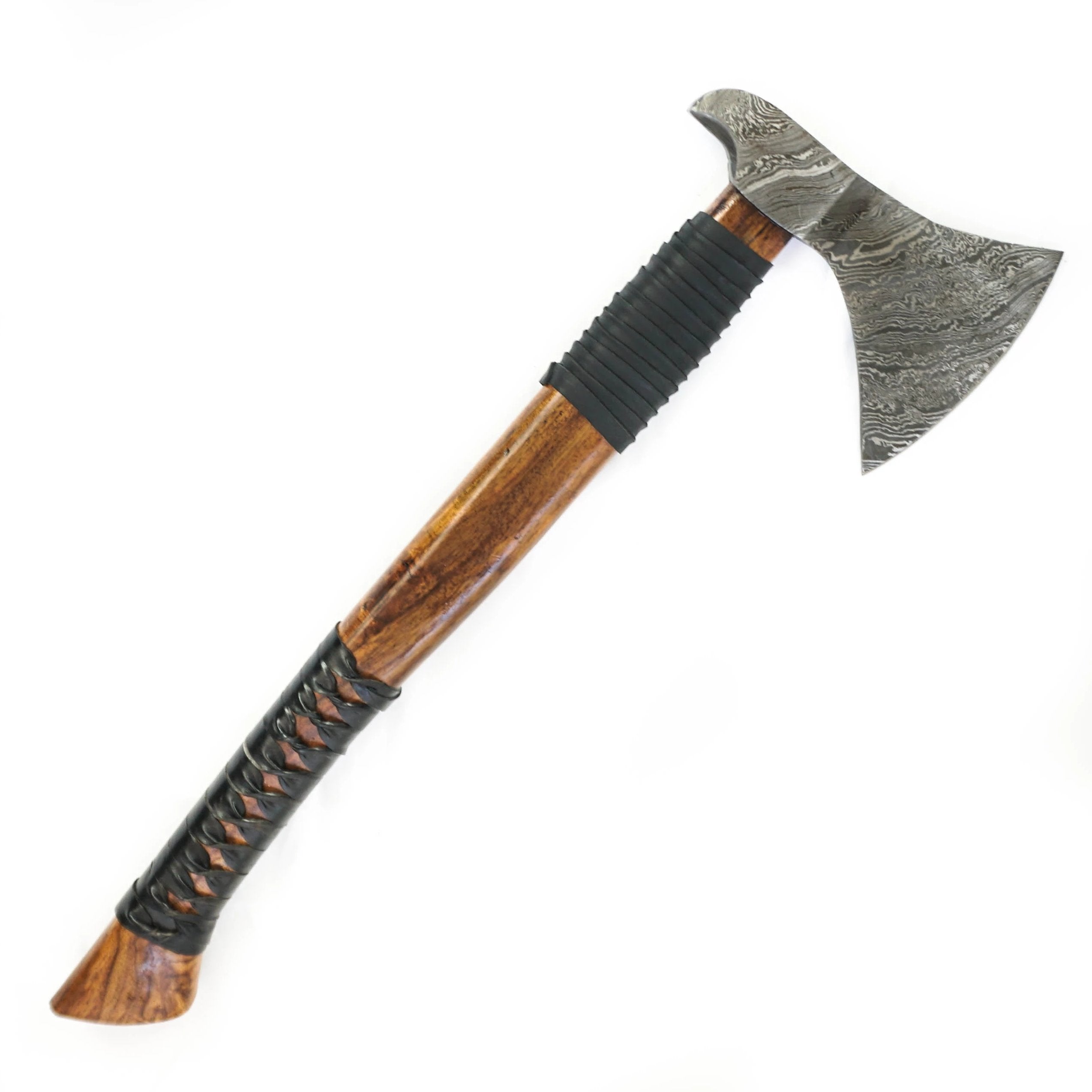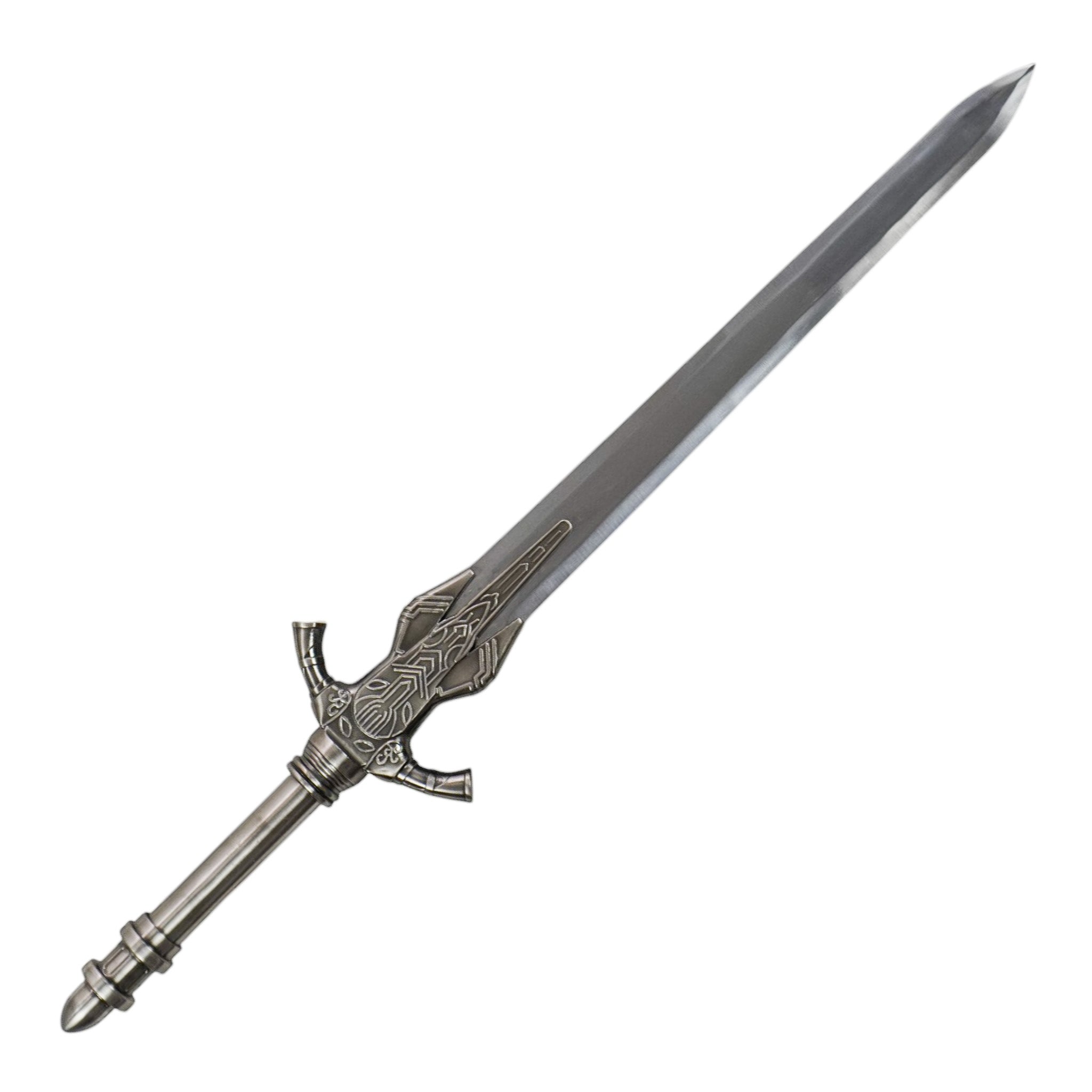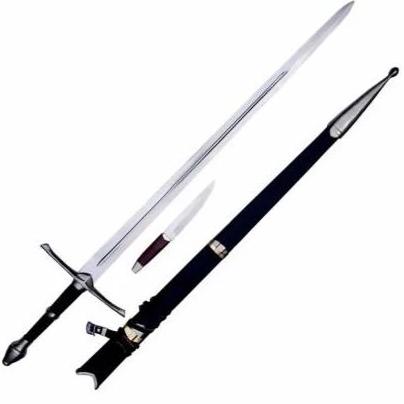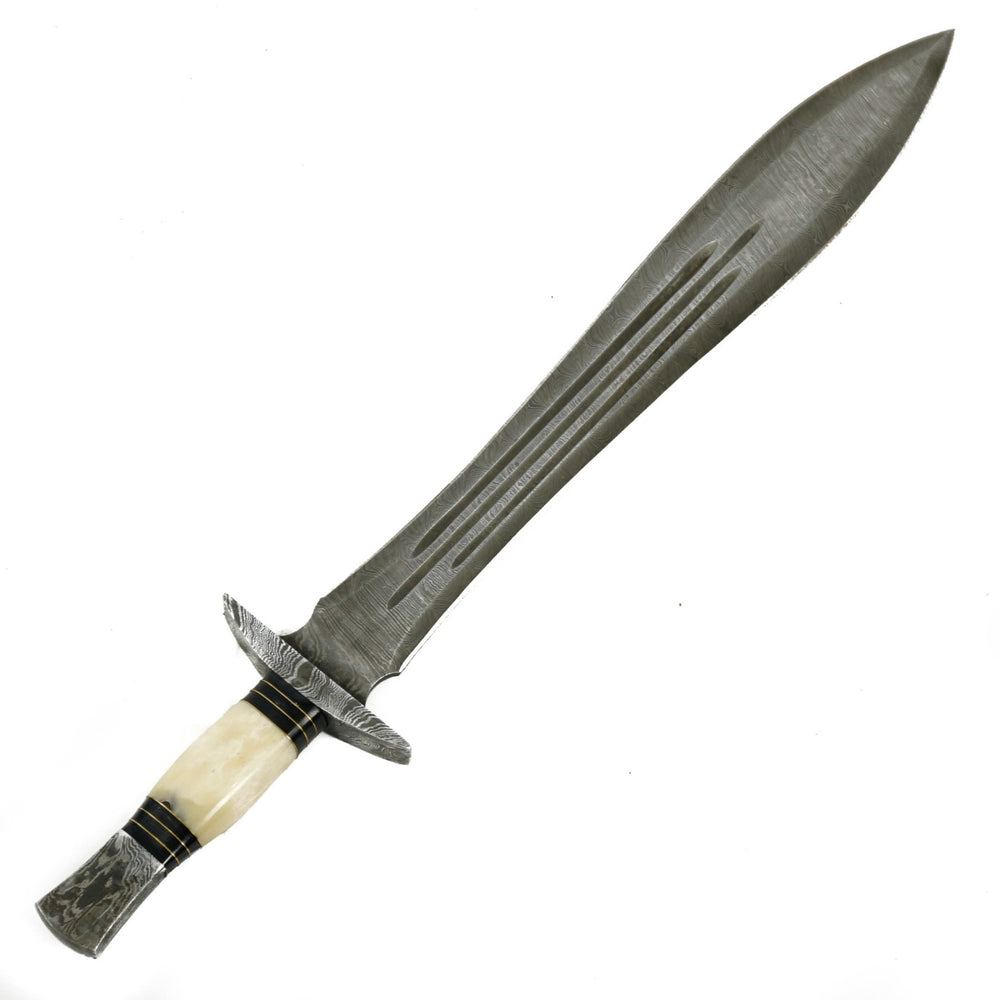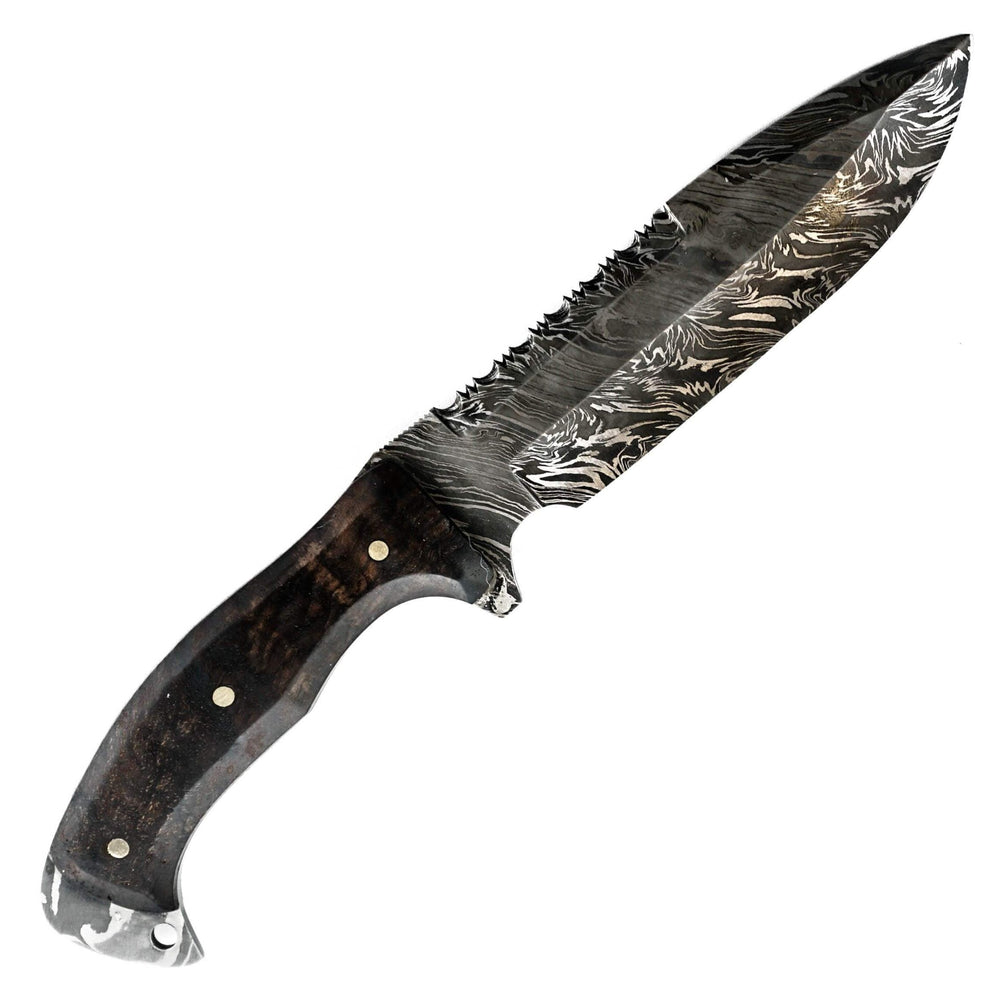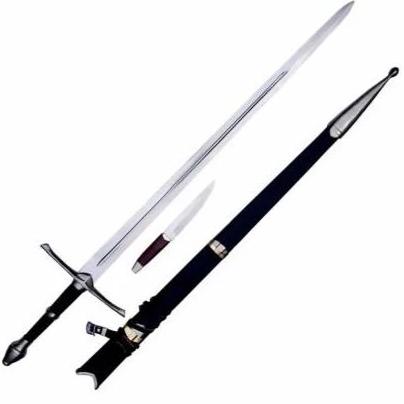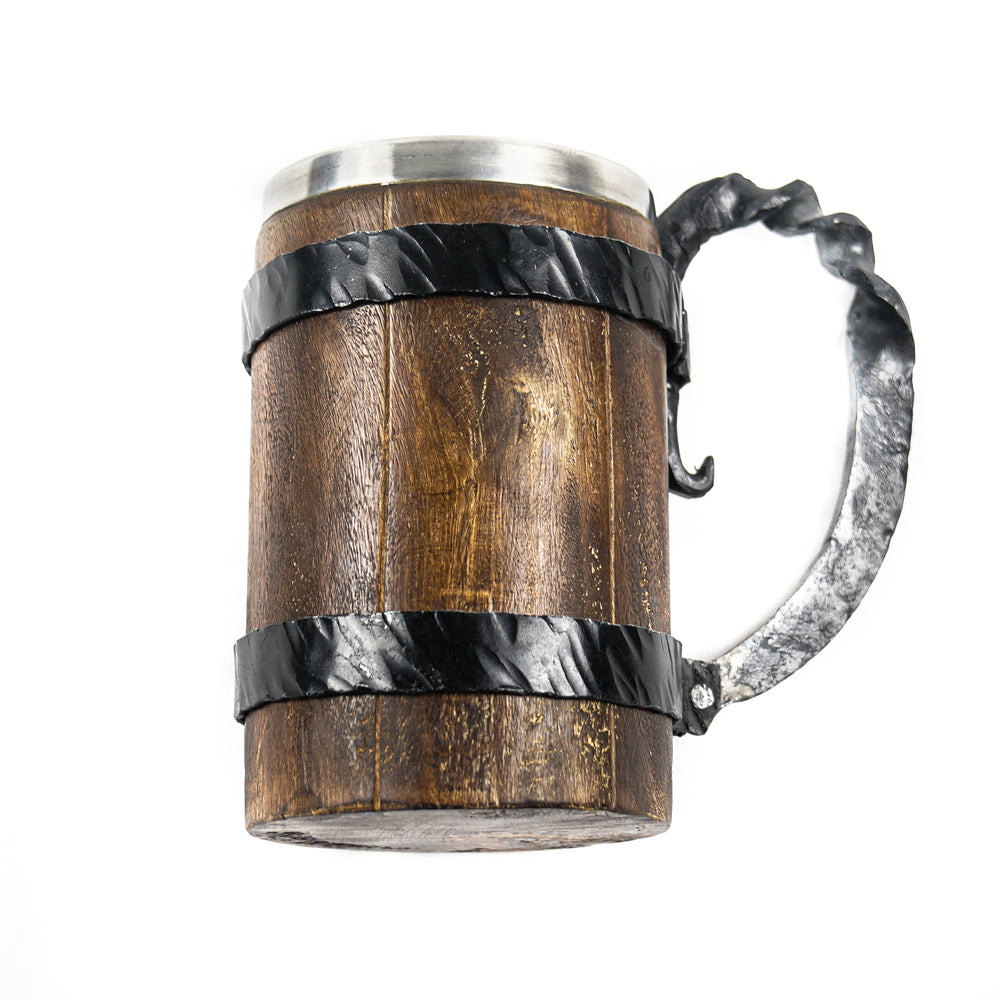Unraveling the History of the Longsword
The longsword, a distinguished weapon of medieval knights, was ideally designed for combating heavily armored foes. Recognized for its cruciform hilt, the longsword was lightweight enough for single-handed use, yet sufficiently long for two-handed wielding. It dovetailed into the military and societal landscape of Europe, leading to its adoption as a dueling weapon. This piece explores the longsword's inception, its role in the Middle Ages, and its distinctive qualities vis-à-vis European greatswords.
What Defines a Longsword?
Modern usage labels any sword wieldable with one hand but long enough for two-handed use as a "longsword." However, "longsword" is a relatively recent term with no historical grounding. Medieval authors used varying terms for swords with differing meanings. Among them were long swords, or espées de guerre or grans espées.
"Longsword" is a term preferred by contemporary historical fencers due to the absence of a universally acknowledged name for this weapon. German fencing texts frequently classified this weapon as part of the "art of the long sword." The concept of fencing with a long sword differed for German-speaking medieval fencers compared to those wielding shorter swords.
Its duality as a sidearm in armored combat suggests that the longsword was of a manageable length for a belt draw. The hand-and-a-half or bastard sword is a typical image. However, fencing expert Joseph Swetnam believed that bastard swords were midway between the lengths of long and short swords.
An Overview of the Longsword’s History
Originating from Viking roots, the longsword evolved over centuries. Earlier versions were designed for slashing, whereas later ones were tapered for thrusting, with both the handle and blade lengthening over time.
Beyond the Middle Ages
The spatha, a Roman cavalry sword, was utilized during the Migration period, from Rome's fall to around 1000. This straight blade had a minor crossguard, gradually evolving into the short-handled, heavy-bladed Carolingian or Viking sword. Carolingian swordsmen often used slashing, thrusting, and armor-damaging tactics.
The Middle Ages
By 1000, swords with disk-shaped pommels and extended crossguards had emerged from their Carolingian or Viking predecessors. These swords also had sharpened points to penetrate chainmail. Knights primarily used the lance, with the single-handed sword serving as a backup.
Around 1300, advancements in metallurgy necessitated superior swords to combat heavily armored foes. Some types of single-handed swords, known as arming or knightly swords, morphed into weapons with sharply tapered blades effective for thrusting against armor. Swords with large blades are effective for cutting and evolved into falchions.
The Emergence of Longswords
Developed around the 1250s in response to improved armor, the longsword's prime was between 1370 and 1440. Offering versatility for one-handed use on horseback and two-handed use on foot, the longsword outshone the arming sword and unbalanced falchions. Throughout the 14th and 15th centuries, the longsword overtook single-handed swords in popularity, becoming the standard weapon in conjunction with superior armor.
The Decline of Longswords
As swords' utility in battle decreased, they found new roles in sports fighting and day-to-day life. Longswords featured in the earliest tournaments and honor battles. With armor falling out of practical use, commoners adopted the rapier as the standard dueling weapon.
Early rapiers were large, double-edged blades designed for cutting and thrusting. By the 16th century, the long, slender rapier was perfected for combat. They also became a part of everyday attire due to their ornate hilts, until the advent of the smallsword.
Conclusion
The medieval longsword, crafted for two-handed wielding, was a formidable weapon in battles, judicial duels, and tournaments, even when used by heavily armored fighters. Unlike greatswords, the longsword was adept at both thrusts and slashes, despite its surprisingly lightweight. As a symbol of medieval warfare, it is one of the most emblematic representations of a knight.

